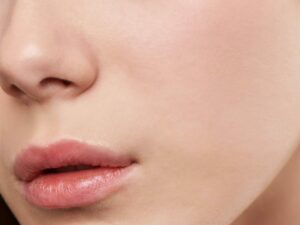6 Common Sunscreen Mistakes We’ve All Made – and what to do instead
Sunscreen is incredibly important, and necessary to protect us from harmful cancer-causing UVA and UVB rays from the sun.

But, we don’t always use it wisely, and if you make these mistakes, you’re still at risk.
Keep reading to find out what the most common sunscreen mistakes are and how to fix them today!
Why We Need Sun Protection
The sun is vital to life on Earth, it is not a bad thing.
In fact, sunlight is required to produce vitamin D, aka the sunshine vitamin. This molecule is involved in almost every biological process of the body from metabolism to bone development to eye sight.
However, too much sun exposure leaves us at risk for early signs of aging, destruction of collagen, and even higher risks of skin cancer.
Therefore, while we can get structured sun time a couple of minutes 3 times a week, it is important to protect ourselves the rest of the time.
Learn what mistakes you might be making along the way today!
Top 6 Sunscreen Mistakes
Here are the most common, most fixable sunblock mistakes you’ve probably made!
Using Aerosol Sunscreen
While it might sound nice to have a spray version of sunscreen, there are big problems with them.
An aerosol sunscreen contains anywhere from 30 to 60% of gas to convert the sunscreen into a spray.
First of all, this means in a product labeled 6 ounces, you might be getting as little as 2 ounces of sun protection.
Secondly, the gaseous solution mixes with the sunscreen product, making it incredibly difficult to know how much sunscreen you are actually using.
This makes it common for people who use aerosol sunscreens to under use sunblock and burn.
Using Powdered Sunscreen
Powdered sunscreen, while an option for individuals who wear makeup, is intrinsically flawed.
You need about 2 mg per square centimeter of skin and that amount of powder does not stick to the skin.
People use it almost like a setting powder or oil reduction powder but that will never be enough sunscreen for the face.
Individuals who have tried to test the UV protection of Powdered sunscreens have found that it offers little to no protection due to application and inability to stay on the skin!
Using a Sunscreen Oil
Similar to a powder, it is difficult for sunscreen oil to actually offer good protection.
Oils tend to run and move around a lot on the face.
When tested under UV light, sunscreen oils have shown to have uneven layers, with some areas more protected than others.
Applying Sunscreen Indoors
This one depends on your indoor situation.
Its the least dangerous mistake on the list too! Better to be safe than sorry, but sometimes you don’t need sunscreen.
First of all, glass from windows will block out almost all UVB rays, so you only need to worry about UVA.
You get about 40% UVA directly from the sun, the rest is reflection from the sky.
If you only see half of the sky in the window, you’re only getting 30 percent, as the percentage drops proportionally to sky view. It drops further as you move away from the window, so at a meter inside you only get 4% and at 3 meters indoors you get less than 1%.
Plus, if your window has trees or other objects blocking the sky, the number once again decreases exponentially.
Basically you only need sunscreen indoors if you are in sunlight or sit by a big open window with a sky view all day.
Moving Sunscreen Product to Another Container
If you move products around from one container to another, you might run into these problems, especially for sunblock.
The sunblock formula may not be able to stay stable in contact with air, dust, or other particles in the environment.
This means your sunscreen might lose effectiveness when you transfer it from one place to another.
Plus, plastics from other packaging can react to the sunscreen filters in the formulas decreasing SPF.
Not Waiting 15 Minutes Before Sun Exposure
This is true for chemicals (those made with organic filters like avobenzone, octisalate, oxybenzone, homosalate, and octocrylene) or mineral sunscreens (those made with physical, inorganic filters like zinc or titanium oxide).
The sunscreen needs time to form a protective barrier and absorb into the skin, no matter the kind of sunscreen used.
It is a bit of a myth that mineral sunscreens work immediately. In fact, all sunscreens offer some protection immediately.
But the wait time is still 15 minutes to 30 for the product to truly skin in and form a layer of protection for the skin!
The Takeaway
Sun is life and highly important for the production of vitamin D, but we still need to be prepared and protected.
Improper use of sunscreen can still lead to damage to collagen, and skin, and even put you at risk for skin cancer.
Use a cream sunscreen instead of a spray, powder, or oil, and remember to Reapply as instructed.
Use sunblock indoors only if you need to, otherwise save your product for sunlight!
Try to keep sunscreen in its original packaging to protect the SPF filters and formula effectiveness.
Remember to wait at least 15 minutes before sun exposure after applying any type of sunscreen to ensure you are properly protected.
Stay safe this summer, enjoy the sun properly, and use sunblock today!
Health starts from within and with little steps, you can make a big difference in your wellbeing.




